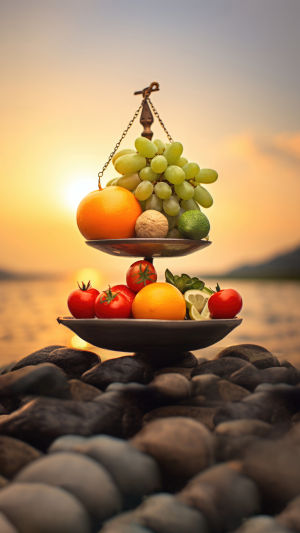Vitamin C, also known as ascorbic acid, is a crucial water-soluble vitamin for human health.
As a potent antioxidant, it plays an essential role in several physiological functions, including collagen synthesis, maintaining the immune system, enhancing iron absorption, and promoting wound healing.
The significance of vitamin C is highlighted by the historical disease scurvy, which afflicted sailors who had limited access to fresh produce. Scurvy, characterized by symptoms such as anemia, fatigue, swelling in some parts of the body, and gum disease, can be fatal if left untreated.
Although scurvy is now rare due to the widespread availability of vitamin C-rich foods, maintaining adequate intake of this vitamin remains critical. This brings us to a common question: which type of food—fruits or vegetables—contains more vitamin C?
Fruits are commonly associated with high vitamin C content, and indeed, many fruits are excellent sources of this vital nutrient. For instance, guava is a standout, containing approximately 228 mg of vitamin C per 100 grams.
This amount far exceeds the daily recommended intake, underscoring guava's status as a superior source of vitamin C. Another fruit known for its high vitamin C content is kiwi, which provides around 93 mg per 100 grams.
Kiwis are not only tasty but also pack a significant nutritional punch. Strawberries are another fruit rich in vitamin C, offering about 59 mg per 100 grams. Citrus fruits, such as oranges, lemons, and grapefruits, are traditionally popular for their vitamin C content.
For example, a medium-sized orange typically contains about 70 mg of vitamin C. Pineapple, with around 48 mg of vitamin C per 100 grams, also makes a notable contribution, especially given its status as a tropical fruit.
However, vegetables can be equally potent sources of vitamin C, often surpassing some fruits in their content. Red bell peppers are among the most vitamin C-rich vegetables, boasting approximately 127 mg of vitamin C per 100 grams.
This amount not only surpasses many fruits but also exceeds the daily recommended intake for vitamin C. Green bell peppers, while slightly lower in vitamin C than their red counterparts, still contain about 80 mg per 100 grams, making them a rich source as well.
Broccoli, another nutrient-dense vegetable, offers around 89 mg of vitamin C per 100 grams, making it an excellent choice for those looking to boost their intake.
Brussels sprouts provide about 85 mg per 100 grams, adding to their nutritional profile. Kale, with approximately 120 mg of vitamin C per 100 grams, stands out as another vegetable comparable to red bell peppers in vitamin C content.
The vitamin C content of these fruits and vegetables can be influenced by cooking and storage methods. Vitamin C is particularly sensitive to heat, and cooking at high temperatures can result in significant loss of this nutrient.
Methods such as boiling or prolonged heating tend to reduce the vitamin C content in vegetables while steaming or microwaving can help retain more of this essential vitamin. Therefore, selecting appropriate cooking methods is crucial for preserving vitamin C.
Storage time also impacts vitamin C levels; fresh vegetables and fruits generally have higher vitamin C content, but extended storage can lead to its gradual decline.
Refrigeration can slow down this loss but cannot entirely prevent it. Furthermore, food processing can also degrade vitamin C, so it is advisable to opt for fresh produce whenever possible.
While specific vegetables and fruits are high in vitamin C, achieving a balanced diet is key to ensuring adequate overall nutrition. Different fruits and vegetables provide not only vitamin C but also other essential nutrients such as fiber, vitamin A, calcium, and iron.
A diverse intake of colorful fruits and vegetables each day is recommended to secure a broad range of nutrients. For instance, incorporating a fruit salad into your breakfast and selecting vitamin C-rich vegetables like broccoli and bell peppers for lunch and dinner can enhance your nutrient intake.
In summary, both vegetables and fruits are important sources of vitamin C, with many vegetables surpassing some fruits in their content. To ensure sufficient vitamin C intake and to obtain other critical nutrients, it is advisable to maintain a balanced diet that includes a variety of vegetables and fruits.
Through careful selection and proper cooking methods, you can maximize the retention of vitamin C in your diet, thereby supporting overall health and nutritional status. By understanding and utilizing the vitamin C content of different foods, you can make informed choices to enhance your diet and well-being.





